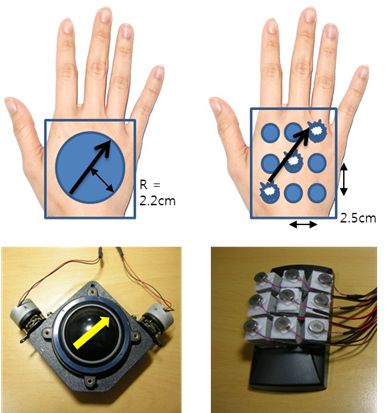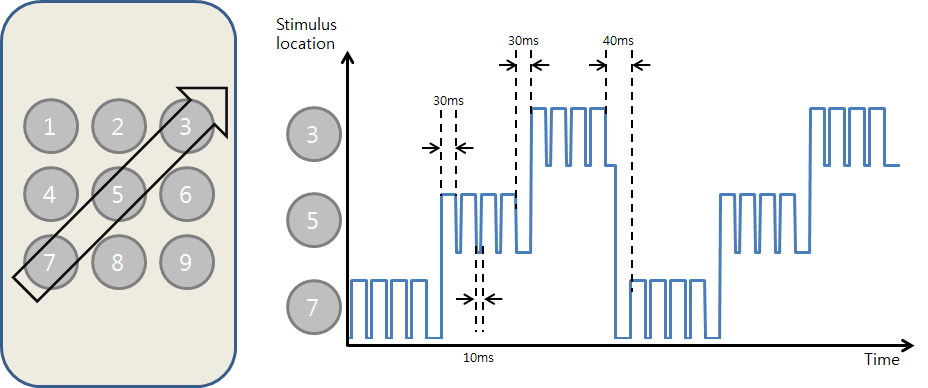Abstract
In this article, we present a design and an evaluation of a hand-held, trackball-based, touch- haptic interface, named ‘Touchball’, for conveying directional cues. By the nature of the trackball mechanism, the device provides flexibility in terms of directional degrees of freedom compared with conventional vibro-tactile devices. It also has the advantage of a direct transfer of force feedback through frictional touch (leveraging on human’s high skin sensitivity), thus requiring only a relatively small amount of inertia by the actuator. This leads to a compact hand-held design appropriate for mobile and 3D interactive applications. We first conducted psychophysical experiments to discover the detection thresholds and measure the perceived amount of directional force feedback. In addition, we conducted a performance and usability test, comparing the Touchball to a vibro-tactile (another touch-based) and aural (another modality) feedback device for an actual application, namely a navigational guide. Experimental results have shown that while both the Touchball and vibro-tactile devices produced comparable task completion time to that with aural feedback, their accuracies were significantly lower. The usability, in most categories, was higher in the order of the sound feedback, Touchball, then vibro-tactile feedback with statistically significant differences. To convey more than just on–off information through tactility such as directions, the vibro-tactile device requires relatively many vibrators and contact points, whereas the Touchball is a more compact and equally effective but with higher usability (e.g. mental load, ease of use, naturalness, etc.). Thus, Touchball offers a viable or even better alternative to a single vibrator or grid-based tactile feedback device especially as a supplementary modality device (to the visual or aural centric interface).
Image

Touchball and vibrotactile device
